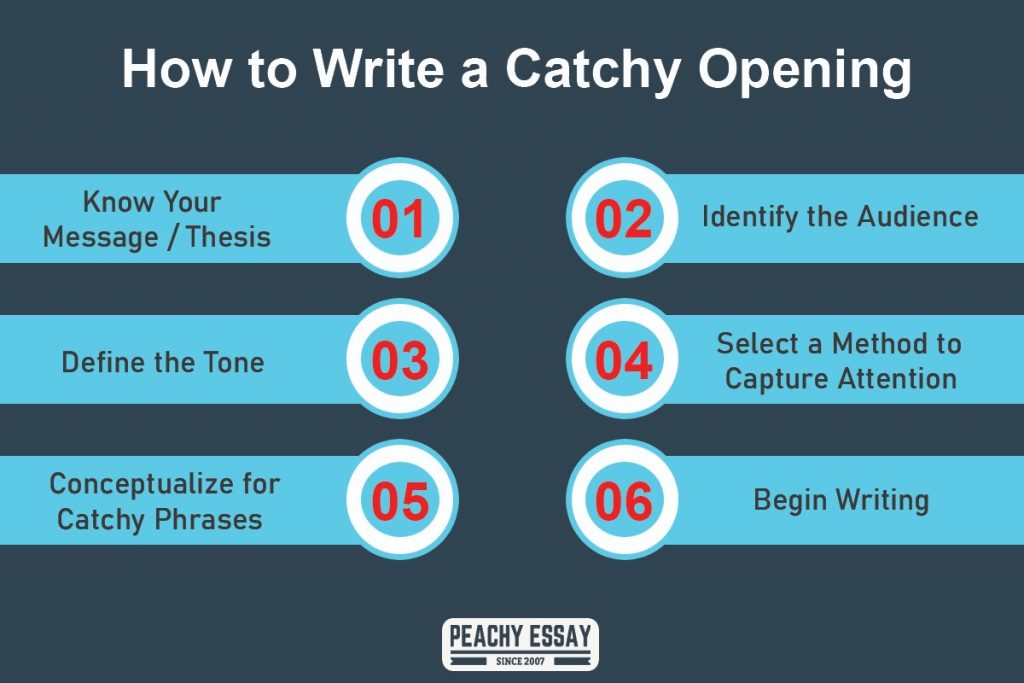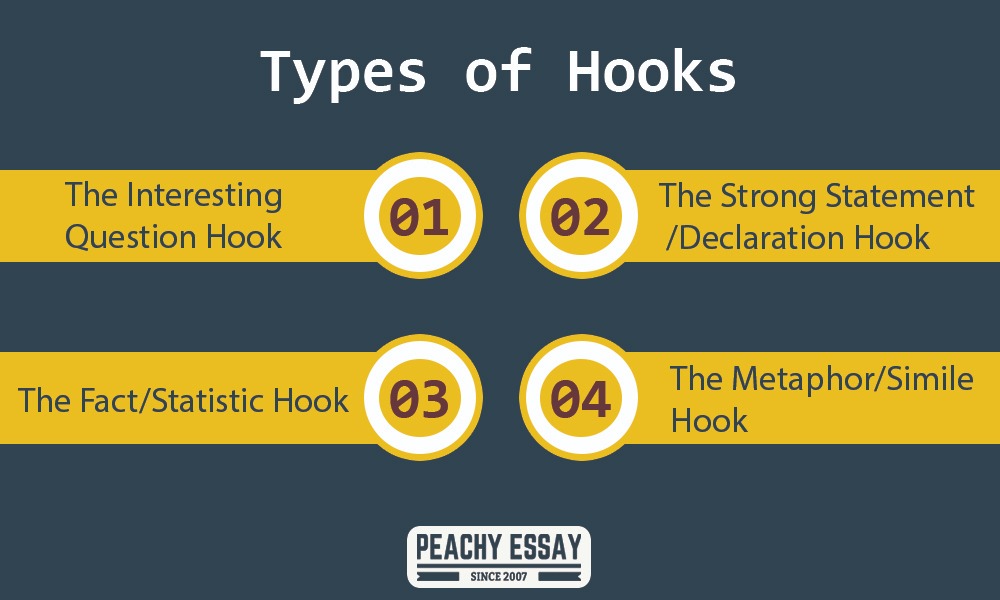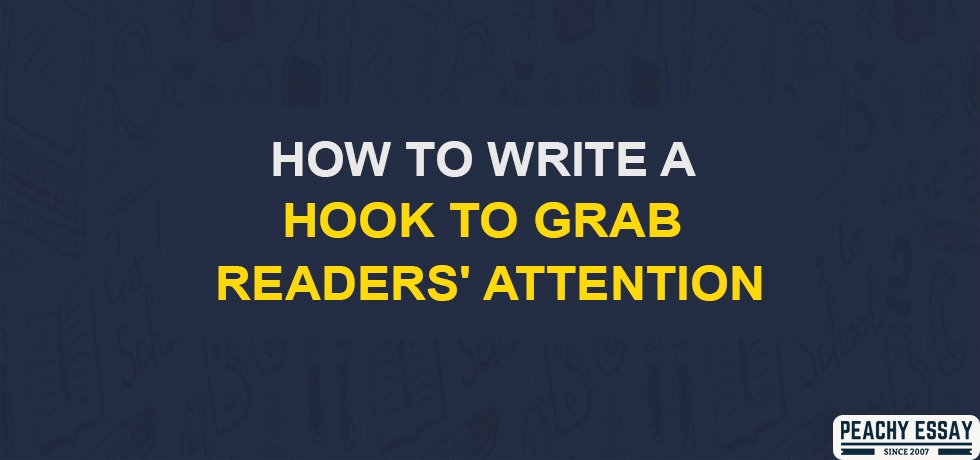Knowing how to compose an incredible hook is a significant ability that each essayist ought to have. The world is covered in an ocean of words. There are expositions, books, websites, contents, short stories, verse, discourses, and that’s just the beginning. With words vibrating off the atmosphere throughout each and every day, how might you actually make something that would bait the billions of individuals on the planet? The appropriate response is straightforward. Start with an extraordinary hook.
What is a good hook sentence?
A solid assertion hook is a sentence that makes a decisive case about your theme. It interfaces with the thesis statement and shows the significance of your exposition or paper. A solid statement is an extraordinary strategy since it doesn’t make a difference if your reader concurs or can’t help contradicting your assertion.
What Is a Hook?
It’s a bit of composing toward the start of your paper that connects with your understanding audience. Normally, a hook is a sentence or group of sentences that bring individuals into perusing your exposition or exploration paper. A hook starts an individual’s interest. You need whoever peruses your paper to think about what occurs straightaway. They are additionally an approach to make an introduction standout.
A hook is the line or lines written to bait a reader or audience and make them need to find out additional information about your paper. It’s an acquaintance that is implied to seize individuals’ attention.
For example:
Happy families are all alike; every unhappy family is unhappy in its own way.
In an exposition, the hook should fall inside the mainline or two of the introduction. In longer works of fiction, such as short stories, books, plays, and contents, you can fuse the hook into the title or compose it into one of the initial scenes.
How to Write a Catchy Opening
Regardless of what sort of hook you choose to utilize, be certain your exposition gives readers motivation to get your composition or listen carefully and oversee your plan as far as possible. Hooks are enclosed to one to two sentences and have barely a sufficient interesting component to tempt individuals to need to understand more. Find how to compose a hook and investigate a couple of examples that may lead you to your own personal creation.

-
Know Your Message/Thesis
Before you can compose an incredible hook, you should have an understanding of the message you need to pass on. The hook needs to tie into your thesis or primary thought.
If you utilize a statement or a measurement to stun readers into focusing, be certain it’s straightforwardly identified with the current point.
The equivalent goes for a joke. In the event that you’d prefer to allure readers with a joke, it must, obviously, identify with your proposal.
-
Identify the Audience
Similarly significant, be certain you comprehend your audience and remember them all through the sum of your composed work.
-
Define the Tone
Will this be a conventional piece or something more laid back and conversational? That will impact the tone of your hook. Maybe you’ll incorporate a distinct measurement for something more formal. Then, you should consider a joke to kick things off in a more conversational tone.
-
Select a Method to Capture Attention
When you understand what message you need to pass on, who your intended audience is, and the tone of the piece, the subsequent stage is to choose what data you can use to catch their attention and how to best present it. Think about the various kinds of hooks and what you think about the topic so you can settle on an educated choice about the best strategy to utilize.
-
Conceptualize for Catchy Phrases
Whenever you have chosen what sort of hook is most appropriate for your composing venture, conceptualize to think of approaches to express what is on your mind. Consider auditing a few instances of extraordinary hooks as a wellspring of motivation, at that point will stir thinking of potential choices to use in your own work.
If you need to utilize a quote or statistics, do some exploration to discover one explicit to your point. Look into articles in publications that cover the point or do a web search utilizing a suitable expression combined with the word statement or statistics.
In the event that you like beginning with an inquiry, make a rundown of inquiries identified with your subject and audit the plans to recognize which one(s) may be best. If you have companions in your intended interest group, consider requesting their feelings on which from your top decisions would be destined to urge them to need to find out additional.
In the event that you incline toward utilizing a joke or tale, thoroughly consider the story you need to use to pass on your point in a silly manner, at that point contemplate how to achieve your objective in only a couple of sentences.
-
Begin Writing
Whenever you have experienced these means, you’ll be prepared to begin composing. Start with your hook and let the words move through your console or composing instrument. When you have a first draft, edit your work from the beginning to the end, giving extraordinary consideration to how successful the hook is.
In the event that the hook isn’t exactly convincing enough, consider substitute choices, and amend until your certain readers will be constrained to need to peruse your work. It’s not in the least strange for an author to change the hook a few times all through the creative cycle.
Types of Hooks

-
The Interesting Question Hook
A fascinating question hook is a point at which you pose an inquiry that identifies with your article or paper. What’s more, the main way an individual can know the response to that question is by perusing your composition.
Individuals are curious. At the point when we hear or read a question, we need to know the appropriate response. In the event that we don’t have an answer, at that point we need to discover. Thus, when you start your paper with a fascinating question hook, this signals to your readers that if they continue perusing you’ll offer them the response.
Here’s an illustration of an intriguing question hook on the subject of prevailing in school:
What is the distinction between successful understudies and unsuccessful undergrads?
The objective of this paper hook is to make you need to realize what understudies who prevail in school do, and what are undergrads who don’t prevail in school fouling up.
-
The Strong Statement/Declaration Hook
A solid statement hook is a sentence that makes a decisive case about your point. It interfaces with the thesis statement and shows the significance of your exposition or paper.
A solid statement is an incredible method since it doesn’t make a difference if your reader concurs or can’t help contradicting your assertion. They will need to perceive how you uphold your assertion.
This is an illustration of a strong statement for the subject of online school classes:
Online school classes are less expensive and more viable than in-person school classes.
This assertion either bolsters your perspective about online classes, or it makes you need to contend against it. In any case, you are interested in what the author says.
-
The Fact/Statistic Hook
Realities and insights hook your reader because they give genuine data about a theme. You can dazzle your reader with your insight and proof from the earliest starting point of your exposition. In any case, you need to incorporate realities that are exact, fascinating, and dependable. Assess your data and ensure it comes from a solid source.
Here’s an illustration of a genuine hook about an article on weapon possession in the United States.
Just about 66% of American grown-ups at some point in their life lived in a home with at least one gun.
-
The Metaphor/Simile Hook
The representation/analogy hook connects with your readers since it makes them consider a point in an alternate manner. Your audience considers what you mean and how you contrast a subject with something that appears to be detached.
A representation is hyperbole that straightforwardly thinks about one thing to another, yet these two things appear to be disconnected. An illustration of a metaphor is: Her sweetheart is a rodent.
The boy isn’t generally a rodent, yet he acts like one.
A simile resembles a metaphor. Both contrast two inconsequential things with one another, yet a simile utilizes the words like or as to associate them. An analogy is less solid than an examination in a similitude. For instance: Writing an exploration paper resembles running a long-distance race when it’s 95 degrees Fahrenheit.
If your article subject is on business writing for a blog you could compose the illustration hook.
A business blog is a magnet pulling customers to an organization.
Or the simile hook:
A business blog is like a magnet that pulls customers to an organization.
The Story Hook
This is where you start with a short story or scene that identifies with your point.
Readers love tales, particularly an elegantly composed story that is critical. The way into an incredible story hook is ensuring the story straightforwardly associates with your article or paper theme. Your story can be close to home or another person’s story.
Here’s an illustration of a story snare for an article about the contrasts between British and American English. I utilized my own anecdote about an outing to England.
I got off the train and hauled my baggage behind me. A taxi pulled up to the check, and the driver got out. He lifted my luggage and stated, “Miss, I’m simply going to place your stuff in the boot.” I didn’t have the foggiest idea of what he implied until I saw him open the vehicle’s trunk. At that point, I understood the boot implies vehicle trunk. I got in the taxi, thinking about the number of different words that would be diverse in England.
You’ll see this story snare is longer than different sorts of article hooks. That is alright. Your hook can be longer, but it shouldn’t be an enormous piece of your exposition or paper. Contrast the length of your snare with the length of the exposition.
Additionally, think about your audience (particularly a scholastic crowd). Ask yourself, “Will a story hook be satisfactory in this course?” If you’re uncertain you can ask your instructor or educator.
The Description Hook
This is where a striking depiction of a scene brings your readers into your composition. A decent portrayal hook will make your reader need to understand what comes next in your composition. It’s generally famous in story expositions, yet you can utilize a depiction hook with a composition. Be that as it may, similar to the story snare ask yourself, “Will this description hook be adequate in this course?”
Here’s an illustration of a description hook for an individual narrative paper about saving a dog:
The dog cried in torment and limped at the edge of the street. His leg was chopped and blood gushed down his leg.
Doesn’t this scene intrigue you about what will befall the dog?
The Quotation Hook
This is where you start your exposition with a citation. The citation could be from a celebrated individual, yet it doesn’t need to be. You can cite anybody in the event that it interfaces with what you’re expounding on.
If you compose an exposition on the subject of schooling you could start with: Nelson Mandela stated, “Training is the most impressive weapon you can use to change the world.”
If you need to utilize a citation for a hook, ensure you quote the words precisely. Pick citations where the words are striking, incredible, as well as significant.
How to Write the Best Essay Hook
Although composing a good introduction involves one’s etymological ability, it relies upon your brain as a rule. Despite your capability in English and the field you’re composing for, you can make great hooks for guaranteeing your paper is at the center of attention.
What is a Hook in an Essay?
An essay hook is a sentence or a couple of sentences in its starting part, which grabs the attention of your reader. Contingent upon this essay starter, you can invigorate the reader to commit time for your paper by getting them intrigued by your substance. Likewise, subsequent to being clear about composing hooks, you will likewise realize how to title an exposition or some other content.
How to Write a Good Hook for an Essay?
When somebody needs to compose your article for you, they will without a doubt pick the most applicable hook dependent on the task details you give. In any case, when you complete a lot of papers in succession, you may adhere to your number one hook (for instance, use manner of speaking inquiries in each exposition). Your decision must be straightforwardly subject to a sort of paper. How about we see the three most basic ideas underneath:
-
Hooks for argumentative essays
Argumentative articles present the two sides of an issue; along these lines, your hook definition exposition ought to not straightforwardly uphold any of the sides. All the measurements, realities, and statements you use have to give an idea about your position or a logical inconsistency of the issue you depict. If the contentious article is relied upon to be written in a proper style, it’s better to keep away from narrating.
-
Hooks for research paper
No jokes permitted here. Any humor you need to place in your examination paper will make it look inconsequential and amateurish. What are your choices in the event that you are not a major devotee of dull, dreary papers? You should give a synopsis of the multitude of central issues and measurements your exploration paper will expound on. Along these lines, you’ll make the reader mindful of the subject on an essential level, so they feel great when understanding it. Click here to read how to write a catchy research paper.
-
Hooks for persuasive essays
Composing these is very simple since influential articles are normally loaded with reasonable articulations and realities you should control. It’s smarter to get passionate in the introduction passage. If you are good at narrating – anything is possible for you. The more subtleties and portrayals you use, the more enthusiastic your reader can get by anticipating all the story components onto their genuine encounters.
Writing skills, such as concocting a charming hook will be valuable when assembling an exposition or article. As a matter of fact, hooks are the mental components that keep anybody’s consideration dynamic and prepared to see data. While conveying a discourse, you may utilize various hooks to keep a powerful association with your audience like clockwork. When recounting a story surrounded by your companions, you can utilize hooks to ensure that nobody nods off. You can read how to write a persuasive essay to convince anybody.
In any event, composing a blog post or a post for Facebook requires utilizing extraordinary hooks. You come to choose to come up with a joke, present a surprising truth, or pose an inquiry, these stunts will pay off by heating up your audience and controlling their attention.




